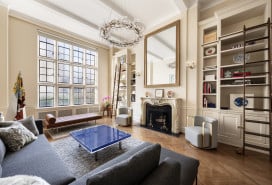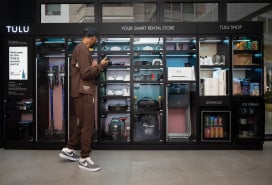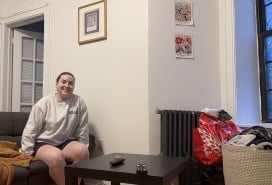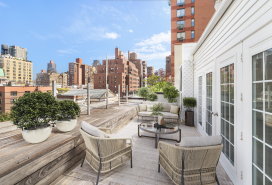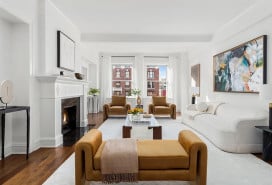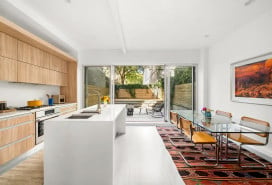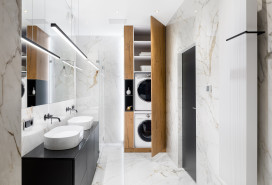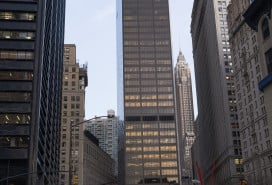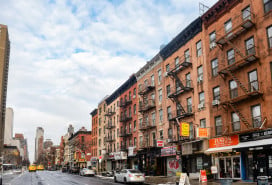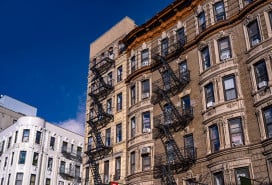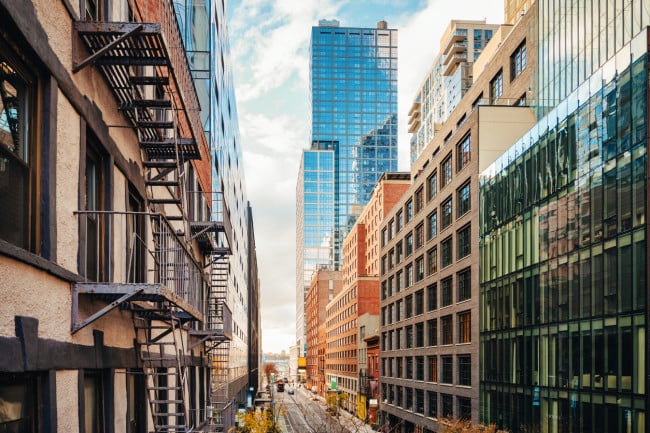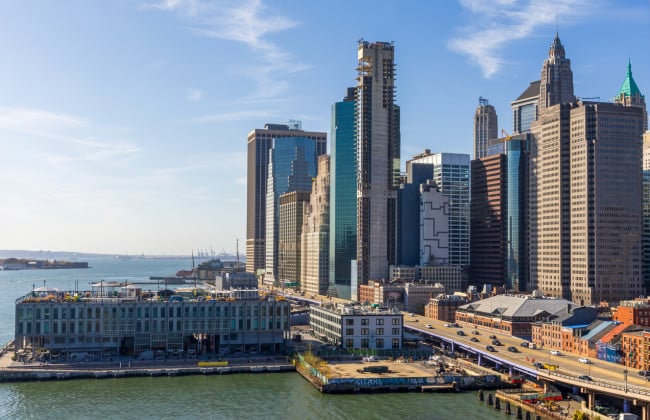How much you can save buying in NYC if you're willing to give up some typical must-haves
- One broker estimates savings of $500,000 if you buy in a building that doesn’t allow in-unit washer/dryers
- You’ll avoid higher monthlies if you buy in building that doesn’t have a doorman or elevator
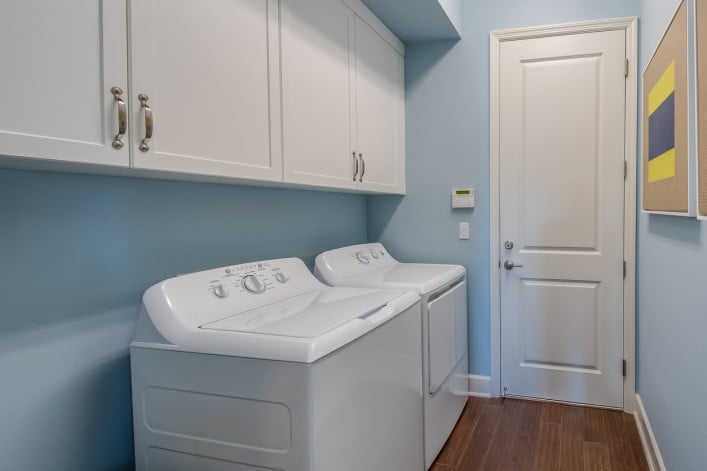
"We have seen equivalent units trade at a difference of a half a million dollars when one had a washer and dryer, and one didn’t,” broker Scott Harris, founder at Magnetic, wrote in a recent Linkedin post.
iStock
Most buyers think in terms of must-haves when apartment hunting in New York City, like private outdoor space, in-unit washer/dryer, doorman, and elevator.
But what if you flip that equation? What if you thought about buying in terms of subtraction, or in other words: How much could you save as a NYC buyer if you forgo private outdoor space, an in-unit washer/dryer, doorman, elevator or even a dishwasher?
That was the math lesson in a recent Linkedin post from broker Scott Harris, founder at Magnetic. “Want to save $500,000 on your apartment? Buy one in a building that doesn’t allow washer/dryers to be installed. We have seen equivalent units trade at a difference of a half a million dollars when one had a washer and dryer, and one didn’t,” Harris wrote.
Harris pointed out that some co-op buildings change their policies on allowing washer-dryers, so you could get a missing washer/dryer discount and then eventually be able to install one. He went on to list some real-life NYC co-op hacks, including giving a super $25,000 to look the other way and let you install a washer/dryer, netting a savings of $475,000. “I’m not saying I know people who have done that. But I know people who have done that,” he wrote.
Or you could pay for a laundry service: “$500,000 would cover a lot of trips to the laundry room,” he said.
Pricing your compromise
Some kind of compromise is common when buying in NYC, even for luxury buyers, but for buyers on a budget, say looking for a two bedroom under $1 million, a starker trade-off is a given—like a doorman vs. a preferred location. “Something has to give,” Harris told Brick.
Putting a price tag on what you are doing without can soften that blow.
For example, a two-bedroom co-op on a fifth floor could be $800,000, but with a terrace the price could be double, he said.
Still, there are lots of “caveats and disclaimers” when taking a menu approach to buying, Harris said, especially when talking about private outdoor space, because there’s a wide range of what’s available, from small terraces to deep backyards. Some private outdoor spaces can be accessed via a living room or kitchen, or a bedroom, factors that add or detract from its value.
“It’s the rare buyer who can say outdoor space is an absolute must,” Harris said. “The litmus test is: ‘Are you are a gardener?’ ‘Do you entertain?’ Because the fantasy of looking out from your terrace while sipping your coffee is fine but you could also walk your dog on the street have a nice experience too.”
Seeing places in person can help you refine your wish list. You may find out that the private outdoor space that seemed so attractive in the online listing “really doesn’t do anything for you,” Harris said. (He has a new book coming out next month: “The Pursuit of Home: A Real Estate Guide to Achieving the American Dream.”)
Case in point: Harris has a client who was very excited about the private outdoor space that came with his new $7 million Chelsea pad, “but he barely uses it.”
Calculating the value of outdoor space
If you’re comparing two places and one has private outdoor space, there are ways to break out that cost.
Jonathan Miller, president and CEO of appraisal firm Miller Samuel, measures it in relation to the price per square foot of the apartment’s interior space, he previously told Brick.
The value of one square foot of outdoor space is equivalent to about 25 or 50 percent of the price per square foot for the apartment, Miller said. To find out how much a patio or terrace adds to the price of a co-op or condo, multiply the total square footage of the exterior space by 25 to 50 percent of the price per square foot of the apartment. (To decide which percentage to use, consider the usability and views and whether it is a high-end space or not.)
For an apartment that costs $1,500 per square foot, a 500-square-foot terrace could add as much as $750 per square foot to the purchase price. That is $375,000, or $750 per square foot multiplied by 500 square feet.
Real estate analytics firm UrbanDigs uses a different calculation to find the value of private outdoor space.
The firm adds $50,000 to $75,000 to the valuation of an apartment with a balcony under 100 square feet. For terraces and gardens, it adds from $200 to $600 per square foot for spaces that range from 100 square feet to over 500 square feet, depending on the space’s utility and size relative to the apartment.
For Manhattan co-op and condo sales during the past 12 months, UrbanDigs found that having a balcony or terrace added 41 percent to the median sales price. The median sales price for units in a building with a small private outdoor space was $1,200,000 vs. $850,000 in buildings without.
Typical must-have | Median price with | Median price without | Percentage difference |
Doorman | $905,000 | $670,000 | 35% |
Elevator* | $865,000 | $600,000 | 44% |
Private outdoor space** | $1.2 million | $850,000 | 41% |
*In buildings with six floors or less. **Balcony/terrace
Source: UrbanDigs. Manhattan co-op/condo sales September 2024 to August 2025
Creative ways to compromise
You can’t always get what you want, but sometimes you get what you need, as the Rolling Stones sang.
For example, instead of private outdoor space, Charles McDonald, an agent at Brown Harris Stevens, points some buyers toward buildings with shared roof decks.
Most of the time, “your neighbors never use it and it becomes semi-private,” he said.
Similarly, buildings with a virtual doorman mean you get some service without paying a premium for a staffed building. A unit in a doorman building can sell for 10 to 15 percent more than an identical unit without a doorman, he said.
Another hack may not work for everyone: Take the stairs. “We advise people to be open to walk ups,” McDonald said.
“To most people paying one million for a walk up almost sounds absurd,” but that strategy paid off for his client who bought a fifth-floor walkup at 23 West 16th St. for $1,175,000. That’s well under $1,000 per square foot, “a rarity for this neighborhood,” he said. A few months later, the third-floor unit sold for $2.45 million, he said.
This last trick seems a bit messy: buying a place without a dishwasher.
It’s rare for buyers “to admit to being open to compromise on this,” McDonald said. But he recently sold a one bedroom that lacked this appliance because the prewar building said it hit its maximum electrical load and does not allow owners to install them.
“The buyer was nervous going into listing, but we got two offers and both buyers said it wasn’t an issue. They didn’t plan on cooking,” he said.
Buying in older buildings
Often the buildings that lack elevators are prewar, pointed out William Yau, a broker at Coldwell Banker Warburg. While location is important factor, units can be anywhere from 5 to 10 percent less than comparable places with an elevator, he said.
A recent report from PropertyShark compared the cost of units in new vs. old buildings and found that properties built in the past decade are nearly 60 percent pricier than older ones.
For places that lack a dishwasher, an upgrade may be in your future and eat into your cost savings.
“An apartment without a dishwasher likely means the condition is older and needs a fair number of updates. There aren’t really direct savings, since it likely means the home will require a fair amount of renovation,” Yau said.
When location matters
This strategy is not a good fit for buyers who value a specific location above everything else, said Becki Danchik, a broker at Coldwell Banker Warburg.
“I have been working with buyers who want to stay within a 10-block radius of Lincoln Center, and pricing has been all over the place. It is less about compromising on the ‘nice-to-haves’ and more about the exact location, the building itself, the amenities offered, and, in the case of private outdoor space, it is largely about the view,” she said.
She is working with buyers who are deciding between two co-ops; both are in doorman buildings and are in similar condition.
One has a private balcony with views of the city and a slice of Central Park from the 26th floor, asking $1.1 million. The building has a large staff, roof deck, gym, driveway, and good-sized lobby.
The other property is more basic with less appeal, and the apartment has a balcony with partial river/city views from the 15th floor, asking $875,000.
“The question for a buyer who really wants a home with private outdoor space becomes, are you willing to save some money with an alright view in an alright building vs. paying top dollar for a spectacular view in a full-service building?" Danchik said.
You Might Also Like



